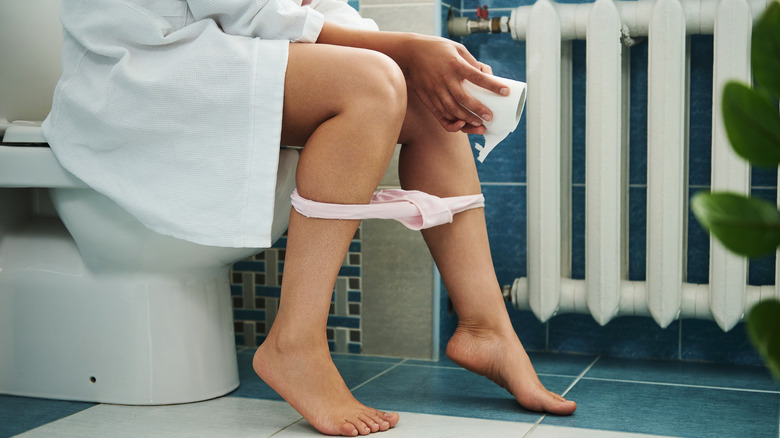Bacterial Vaginosis is one of the most common vaginal infections, often causing discharge, odor, and discomfort. Because its symptoms overlap with other conditions, it’s frequently assumed to be the culprit behind chronic irritation. However, not all vaginal discomfort stems from infection.
Chronic vaginal or vulvar irritation can feel like an unsolvable mystery, especially when test after test comes back “normal.” For many people, the assumption that all irritation must be caused by bacteria or fungi leads to repeated misdiagnoses and frustrating treatments that don’t work. One common but often misunderstood condition behind this discomfort is vulvodynia: a chronic pain syndrome that isn’t caused by an infection at all.
Recommended: Provoked vs Unprovoked Vulvodynia: What’s the Difference?
In this article, we’ll break down the key differences between bacterial vaginosis and vulvodynia, explore why accurate diagnosis matters, and help you understand when it’s time to look beyond antibiotics and start asking different questions.
What Is Bacterial Vaginosis (BV)?
Bacterial Vaginosis (BV) is a common vaginal condition caused by an imbalance in the normal bacterial flora of the vagina. Under healthy conditions, Lactobacillus bacteria help maintain a slightly acidic environment that protects against infections. When this balance is disrupted, often due to factors like douching, unprotected sex, or changes in hygiene, harmful bacteria like Gardnerella vaginalis can overgrow, leading to Bacterial vaginosis.

The most recognizable symptoms of Bacterial vaginosis include a thin, grayish-white discharge and a strong, fishy vaginal odor, particularly after sex. Some individuals may also experience itching, irritation, or a mild burning sensation when urinating. However, many people with BV have no symptoms at all, which can make the condition easy to overlook or confuse with other vaginal issues like yeast infections.
Recommended: Is Burning During Penetration a Sign of Vaginismus?
Diagnosis is usually done through a pelvic exam, pH testing, and examining vaginal discharge under a microscope. Bacterial vaginosis is typically treated with antibiotics such as metronidazole or clindamycin, either orally or as a vaginal gel. While treatment is effective, recurrence is common, especially if underlying triggers aren’t addressed. Though not considered a sexually transmitted infection, Bacterial vaginosis is linked to sexual activity and can reappear if the vaginal environment remains unbalanced.
What Is Vulvodynia?
Vulvodynia is a chronic condition characterized by persistent pain, burning, or discomfort in the vulva, the external part of the female genitalia, without an identifiable cause. Unlike infections such as bacterial vaginosis or yeast infections, vulvodynia is not caused by bacteria, viruses, or fungi. The pain can be constant or intermittent and may be triggered by activities like sitting, wearing tight clothing, riding a bike, or having sex.
The symptoms of vulvodynia vary from person to person but often include stinging, rawness, soreness, or a feeling of irritation. Some people describe the pain as sharp or knife-like. It can affect the entire vulva (generalized vulvodynia) or be localized to specific areas, such as the vaginal opening (vestibulodynia). What makes it particularly frustrating is that routine tests, swabs, or physical exams often come back normal, leading to misdiagnosis or dismissal of symptoms.
While the exact cause of vulvodynia is still not fully understood, possible contributors include nerve injury, hormonal imbalances, inflammation, pelvic floor muscle dysfunction, or even past infections that sensitized the area. Diagnosis typically involves ruling out other conditions, and treatment often requires a multi-faceted approach — including topical medications, nerve pain treatments, pelvic floor therapy, and lifestyle adjustments. Because it’s often misunderstood, many people suffer for years before getting the right diagnosis and relief.
Key Differences Between BV and Vulvodynia
1. The Cause
- BV is caused by an overgrowth of bad bacteria in the vagina, disrupting the natural balance.
- Vulvodynia has no known infection-related cause. It’s a chronic pain condition possibly linked to nerve sensitivity, hormonal shifts, or past trauma.
Recommended: How to Find a Specialist for a Rare Genital Pain Disorder
2. Where You Feel It
- BV affects the vagina (inside), often with irritation and discharge.
- Vulvodynia affects the vulva (outside), with burning, rawness, or pain on the skin around the vaginal opening.
3. Odor and Discharge
- BV typically comes with a strong, fishy odor and a thin, grayish discharge.
- Vulvodynia doesn’t involve odor or abnormal discharge. Symptoms are more about pain than fluids.
4. Type of Discomfort
- BV causes mild to moderate irritation, especially when peeing or after sex.
- Vulvodynia causes sharp, burning, or stinging pain that can be constant or triggered by touch, pressure, or even sitting down.
5. Diagnosis Process
- BV can be diagnosed through swabs, pH tests, or looking at vaginal fluid under a microscope.
- Vulvodynia doesn’t show up on any test. It’s usually diagnosed after ruling out infections or skin conditions — which means it can take time and persistence.
6. What Works for Treatment
- BV is treated with antibiotics like metronidazole or clindamycin, and symptoms often go away quickly.
- Vulvodynia requires a more complex, long-term approach: pain management, pelvic floor therapy, lifestyle changes, and sometimes nerve medications.
7. Is It an Infection?
- BV is an actual infection. It’s caused by bacteria and responds to meds.
- Vulvodynia is not an infection. That’s why antibiotics, antifungals, or home remedies don’t help — and why misdiagnosis is so common.
When Chronic Irritation Isn’t an Infection: 4 Signs to Watch For
1. The symptoms keep coming back, even after treatment
You’ve taken antibiotics, tried antifungals, used creams, maybe even changed your soap or underwear fabric… but the irritation always returns. If you’re stuck in a frustrating cycle of temporary relief, it might be because the problem isn’t an infection at all.
Recommended: Can You Have Vaginismus Without a History of Trauma?
2. There’s little to no discharge or odor

BV usually has a strong smell, and yeast infections come with thick discharge. If your discomfort doesn’t involve any of that, and instead feels more like burning, rawness, or pain, vulvodynia could be the real issue.
3. Tests keep coming back “normal”
When swabs, pH tests, and cultures show nothing unusual but you still feel pain or irritation, it’s easy to feel like you’re imagining things. You’re not. Vulvodynia often flies under the radar because there’s no specific test for it.
4. Touch or pressure makes it worse
Discomfort during sex, pain when inserting a tampon, stinging when sitting for long periods, these are all signs of nerve sensitivity, not infection. If physical contact seems to trigger or worsen the pain, it’s a strong clue that you’re dealing with a pain condition, not something bacterial.
Treatment Options for Vulvodynia: Finding Relief That Actually Works
Dealing with vulvodynia can feel exhausting, especially after being misdiagnosed or told “nothing’s wrong.” The good news? There are treatment options that can help manage the pain and give you your life back. Since vulvodynia isn’t one-size-fits-all, it often takes a mix of approaches to find what works best for you.
Recommended: Can Vaginismus Develop Suddenly?
1. Pelvic Floor Physical Therapy
Many people with vulvodynia have tight or overactive pelvic floor muscles without realizing it. A pelvic floor therapist can help retrain those muscles, reduce tension, and ease pain over time. This is one of the most effective, non-invasive treatments out there.
2. Topical Medications
Doctors may prescribe creams like lidocaine to numb the area or compounded creams with nerve-calming ingredients. These are often applied before activities like sex or during pain flare-ups for relief.
3. Oral Medications for Nerve Pain
Drugs used to treat nerve pain, like gabapentin or amitriptyline, can be helpful when pain is constant or severe. They don’t “cure” vulvodynia, but they can calm the nerves that are sending pain signals to your brain.
4. Lifestyle Adjustments
Small changes can make a big difference. Wearing breathable cotton underwear, avoiding scented products, and switching to gentle, pH-balanced washes can help reduce irritation. Reducing stress and getting enough rest can also calm your nervous system and ease symptoms.
5. Counseling and Support
Living with chronic pain, especially in such a personal area, can take a toll emotionally. Therapy or support groups can help you cope with the mental and emotional side of vulvodynia, rebuild confidence, and feel less alone in your journey.
6. Other Medical Options
For some, treatments like nerve blocks, Botox injections, or even surgery (as a last resort) may be discussed. These are typically considered when other options haven’t provided enough relief.
Recommended: Can Botox Injections Help Severe Vaginismus?
Managing BV Recurrence: How to Break the Cycle
If you’ve had bacterial vaginosis (BV) more than once, you know how frustrating and discouraging it can be. One round of antibiotics might clear it up temporarily, but for many people, BV keeps coming back sometimes within weeks. So what can you do when you’re tired of playing the BV guessing game? Here are some ways to reduce your chances of recurrence and take control of your vaginal health:
1. Avoid Douching and Scented Products
Douching, perfumed soaps, and scented panty liners may seem like they help with freshness, but they actually disrupt your vagina’s natural balance. Stick to gentle, unscented products, and remember, your vagina is self-cleaning.
2. Consider Probiotics
Taking probiotics, especially strains like Lactobacillus crispatus, may help restore healthy vaginal bacteria. You can find them in supplements or in foods like yogurt, kefir, and fermented veggies. Some people also try vaginal probiotics, but always check with a healthcare provider first.
3. Practice Safe Sex

Unprotected sex (especially with new or multiple partners) can introduce new bacteria that throw off your vaginal microbiome. Using condoms and urinating after sex may help reduce BV flare-ups. Some people even experience fewer symptoms when their partners get treated too.
Recommended: Is K Lube Vagina Safe?
4. Maintain Good Hygiene Without Overdoing It
Wipe front to back, change out of wet clothes quickly, and opt for breathable cotton underwear. But don’t over-wash. Too much cleansing can strip away the protective bacteria your vagina needs.
5. Follow Through With Treatment Completely
Even if your symptoms clear up halfway through your antibiotics, finish the entire prescription. Incomplete treatment may not fully eliminate the overgrowth, allowing it to return even faster.
6. Track Your Triggers
Pay attention to patterns. Does your BV return after your period? After sex? After using certain soaps or wearing tight leggings? Keeping a symptom journal can help you spot triggers and adjust your routine.
Conclusion
Chronic vaginal or vulvar irritation isn’t just frustrating. It can be isolating, exhausting, and even confusing. For many people, the automatic assumption is that any discomfort “down there” must be an infection like BV. But as we’ve seen, not all pain or irritation comes from bacteria. Conditions like vulvodynia are real, often misunderstood, and require a completely different approach to diagnosis and treatment.
The most important takeaway? You know your body best. If something feels off and standard treatments aren’t helping, don’t be afraid to ask more questions, seek second opinions, or explore different possibilities.
